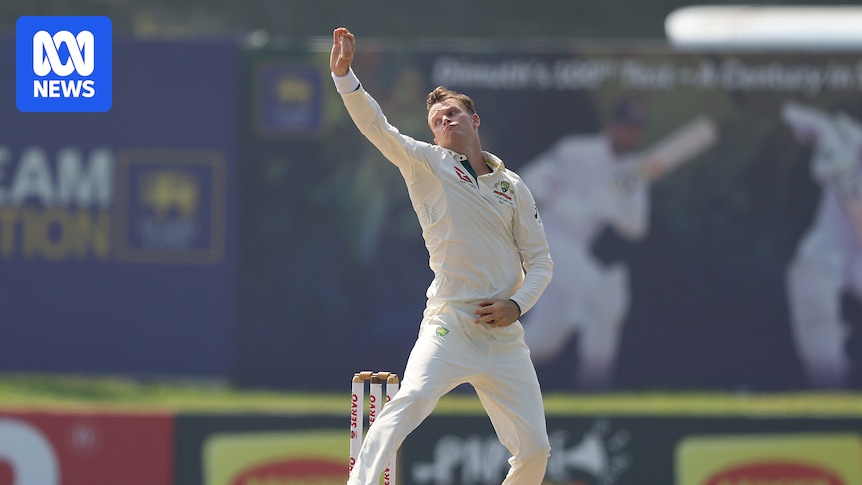
The International Cricket Council’s (ICC) decision to clear Australian left-arm finger spinner Matthew Kuhnemann of having an illegal bowling action has sparked as many questions as it has provided answers. Kuhnemann was reported during the recent two-Test series against Sri Lanka by match officials for a suspect action. However, after testing at the National Cricket Centre in Brisbane, Cricket Australia announced that Kuhnemann is free to continue playing international cricket.
Kuhnemann expressed his relief, stating he never doubted his bowling action. “It’s a weight off my shoulders,” he said, acknowledging the potential career-ending consequences of such accusations. The stakes were high, reminiscent of the early 1960s when Ian Meckiff’s career was derailed by similar allegations.
Questions Surround ICC’s Testing Process
Despite Kuhnemann’s clearance, the ICC’s refusal to release details of the testing process has left the cricket community in the dark. An ICC spokesperson told ABC Sport, “We do not release the videos and detailed reports,” citing standard policy. This lack of transparency has led to speculation and criticism, particularly regarding the umpires and match officials who initially reported Kuhnemann.
Experts argue that understanding the specifics of the testing process is crucial. Questions about the angle of Kuhnemann’s elbow bend, his mechanics, and whether the testing conditions mirrored match scenarios remain unanswered. These details are not only vital for Kuhnemann’s future but also for other bowlers and their coaches who seek clarity on what constitutes a legal action.
Historical Context and Expert Opinions
The ICC’s decision not to disclose testing data contrasts with past precedents. In 2001, a report on Pakistan’s fast bowler Shoaib Akhtar by the University of Western Australia was made public. Similarly, in 2004, the same department tested Sri Lankan off-spinner Muttiah Muralitharan, leading to significant changes in the ICC’s illegal delivery laws.
Emeritus Professor Bruce Elliott, who has tested numerous bowlers, including India’s Harbhajan Singh and South Africa’s Johan Botha, advocates for transparency. “It didn’t ever seem any problem with us talking about the actual data that was collected,” Elliott said, emphasizing the importance of public access to such information for the legitimacy of the process.
“It’s to the bowler’s advantage to say that out of X number of deliveries he bowled, he bowled them under the eye of a cricket coach who would state that they were valid deliveries and then what the levels were,” Elliott stated.
Implications for the Future
The debate over transparency in bowling action testing is not just about Kuhnemann. It reflects broader concerns within the cricket community about the fairness and consistency of the process. Biomechanics expert Rene Ferdinands, whose research contributed to the 15-degree rule, suggests that the process for identifying potentially illegal actions needs reform.
Ferdinands argues that making data publicly available would benefit the game and the players. “They’re the ones under the microscope,” he noted, highlighting the need for clear communication about testing methodologies and results.
As the ICC remains silent on the specifics of Kuhnemann’s case, the call for transparency grows louder. Revealing the data and methodology could dispel doubts and reinforce confidence in the system, ensuring that players and officials are judged fairly.
For now, Matthew Kuhnemann can focus on his cricket, reassured by the ICC’s clearance. However, the broader issue of transparency in bowling action testing remains unresolved, leaving room for ongoing debate and potential reform in the future.






